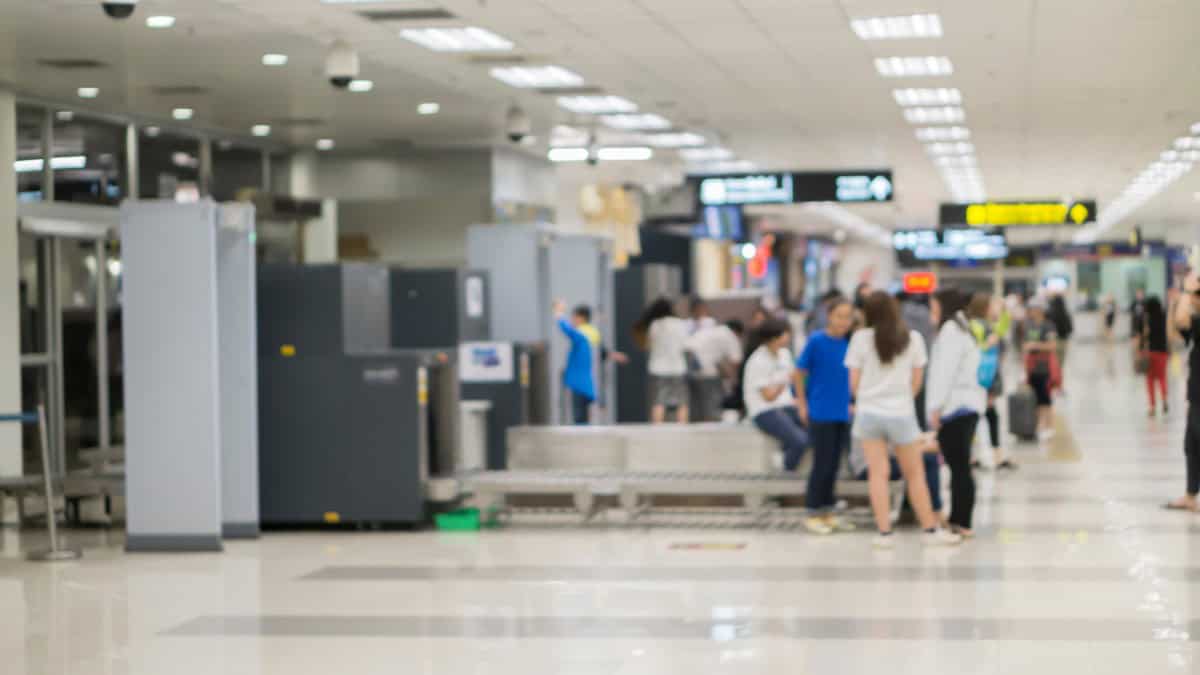
When I walked into Philadelphia International Airport this week, something felt different. The usual rhythm of security lines was broken – two TSA lanes had gone dark, a subtle but noticeable strain caused by the ongoing shutdown.
You could sense a mix of confusion and resilience in the crowd. For a city that depends on its airport to keep people and business moving, this small disruption carries a bigger story about how travel, patience, and planning intersect under pressure.
As closures take effect, travellers are already reporting concerns about potential Philadelphia Airport delays, especially during peak periods and international departure windows.
What’s Changed Since the Closure?
The airport and the Transportation Security Administration (TSA) had announced the upcoming closure of two lanes last week, citing ‘operational optimization’ as the reason. All terminals at Philadelphia International Airport remain connected past security, allowing passengers to access any gate from any open checkpoint. The closures took effect on November 5.
Since then, I’ve observed three major shifts:
- Clearer guidance and signage: In Terminal A-West, the digital boards and overlays said: “Checkpoint A-West temporarily closed. Please proceed to A-East or B.” A spokesperson told me airport staff have increased the number of roving greeters and deployed more directional signage throughout the terminal interior. The aim is to minimize confusion for travellers redirected from A-West or F security checkpoints.
Enhanced passenger communications: An email alert from the airport Monday evening reminded travellers: “Allow additional time at all PHL checkpoints. Plan to use any open terminal. Shuttle service between terminals remains available.” The airport website’s updated “Security Checkpoint Hours” page clearly lists A-West and F as closed for now.
Airlines and ground staff stepping up: I met with a gate agent for one of the airlines operating from Terminal F, who said they were proactively informing passengers on check-in: “When you get to security, expect to go through Terminal B instead. We’re telling connecting flyers, especially to pad their schedule.” The airline has also added a pop-up announcement at their mobile check-in screen: “Terminal changes may add 10-15 minutes to your processing time.”
Reality for Travellers This Week
Walking through the remaining open checkpoint lines – Terminals A-East, B, C, and D/E – I observed real-world passenger behaviour and the ripple effects of the closures:
- At the A-East checkpoint around 8:15 a.m., the line was moving steadily. I asked a tourist from Ohio what they knew about the closure. They replied: “I heard something about A-West, but wasn’t sure. We arrived two hours early just in case.”
- At the connector between Terminals F and C, several families were using the American Airlines shuttle bus (which remains available). While the bus lets passengers move between terminals without going through the F checkpoint, it can add extra steps, such as boarding and exiting with small children and luggage, as one mother noted.
- A business traveller headed to an international flight from A-West told me he chose to check in via A-East and then walk over because the alternate route felt safer. He said: “I didn’t want surprises at the checkpoint.”
- I also asked a TSA officer standing near the closed A-West entrance what delays look like. The officer replied: “So far, so good. We’re keeping wait times under control. But we are monitoring if volumes spike later in the week.”
So far, the airport and TSA appear to have managed the change without major disruption – but the experiment is ongoing.
Why the Closures Still Matter
The reason these two lane closures matter is bigger than just moving from one checkpoint to another. Here are four key reasons I identified from my conversations and observations:
- Risk of compounding delays. If two checkpoints are closed, the remaining lanes absorb greater volume. A surge in travellers – whether due to holiday bookings, big events, or weather delays elsewhere – could strain those lanes. The airport itself warns travellers to arrive two hours early for domestic flights and three hours early for international flights.
International & connecting flights are more exposed. Terminal A-West, now closed, serves many international departures. Passengers connecting through or arriving from abroad may face larger adjustments. Terminal F handles some regional connections, and the bus service to the terminal now adds a logistical step.
Perception, brand, and regional travel dynamics. For Philadelphia, the airport is of course a gateway for business, tourism, and regional travel. If travellers perceive that operational reliability is compromised, they might shift to other hubs which could damage the local economy.
The shutdown and workforce stress remain the underlying driver. These closures are a symptom of a deeper strain. If the government shutdown continues, further staffing reductions or more lane closures could follow. That uncertainty affects planning and confidence.
What Airport Officials Are Monitoring
When I toured the airport’s operations centre, I overheard one official say, “We have three scenarios: volumes stay stable, volumes increase modestly, or volumes spike. Our staffing buffer is tight.” I later spoke with the airport spokesperson, who clarified that they are watching:
- Hourly passenger throughput in remaining lanes
- Wait times and queue lengths
- International check-in volumes in A-East and other gates that once relied on A-West
- Staffing levels for outsourced functions (screening assistants, shuttle drivers, informed travellers)
- Traveller feedback via surveys and real-time social media
If any one of those metrics degrades significantly, the airport may announce additional contingency measures. These may include opening the closed lanes again or shifting gate allocations across terminals. The situation continues to appear in Philadelphia news, reflecting rising public concern over possible additional disruptions. As of now, no reopening date has been set.
Advice for Flyers Through PHL This Week
Based on what I saw and heard, here are my travel tips to help you avoid unexpected Philadelphia Airport delays and keep your trip running smoothly:
- Arrive early. At least two hours for domestic flights, three for international.
- Check your terminal and gate ahead of time. If your original departure terminal is A-West or F, you might need to go through A-East, B, or D/E instead.
- Use TSA PreCheck if you have it. Terminal C remains dedicated to PreCheck and may offer shorter lines.
- Consider your baggage and connection buffer. If you have international or connecting flights, plan extra transit time.
- Use transit signage and shuttle services carefully. For F-terminal flyers relying on the bus to C, allow more time.
- Monitor airline notifications. Some airlines may send updates about recommended arrival times or alternative check-in locations.
- Be patient and flexible. Operational conditions may change given the shutdown. If you experience issues, contact your airline early.
- Stay updated. Airport websites and apps list checkpoint hours and real-time wait estimates.
What This Means for Philadelphia’s Travel Ecosystem
From where I stood this morning, I concluded that the checkpoint closures represent not just a short-term inconvenience but a signal of potential wider stress in the regional travel infrastructure.
Philadelphia benefits from strong business, tourism, and suburban commuter traffic. If operational reliability at its airport suffers, it could shift cost burdens to airlines, increase travel time for commuters, and reduce competitiveness for the region. The fact that PHL is proactively closing lanes rather than waiting for failure suggests leadership is trying to maintain control. But being proactive isn’t the same as being comfortable.
The tourism sector, convention planners, and local hotels will also be watching. If passenger experience degrades, it could affect bookings later in the season. For business travellers based in the region, delay risk may influence airline choice. For freight and cargo that rely on international links via A-West, reduced terminal capacity could raise costs over time.
The Broader National Context and What Philadelphia Might Face
Airport operations across the country are under pressure from the government shutdown. The TSA has warned of workforce fatigue and delays at major hubs. If the shutdown persists, the risk of further closures or lane consolidations may become more concrete.
Philadelphia may not be facing the worst of it (at least not yet), but this closure of two lanes shows how even large airports are vulnerable. If staffing falls further, it may not just be a matter of closed lanes but rerouted flights, reduced frequencies, or deferred capital projects.
Possible Future Scenarios and What to Monitor
Here are three possible pathways for PHL in the near future:
- Stable recovery scenario. Staffing levels stabilize, volumes remain steady, the closed lanes reopen in weeks, and major disruption is avoided.
- Prolonged constraint scenario. The shutdown drags on, staffing remains weak, and the closed lanes stay shut for the remainder of the year, with increased wait times and operational costs.
- Escalation scenario. Additional terminals face partial closures, airlines shift flights, or schedule adjustments grow, and passengers start choosing other hubs.
I asked an airport executive which path they expect. He said, “We’re built for the first scenario. But we are prepared for the second. We hope to avoid the third.” That acknowledgement captures both hope and caution.
My Reflection After a Week of Change
Walking through the terminal this morning, I couldn’t help but notice the difference a week makes. A week ago, this story was future-tense: “two lanes will close.” Today, it’s an operational reality. The crowds are moving. The airport is routing. No chaos erupted. But there’s a quiet strain and an undercurrent of risk.
I came away thinking this: the travel experience we expect relies on staffing, redundancy, workflow, and communication. When one layer is pulled out (two screening lanes), the rest carry an extra load. In Philadelphia, those other layers are holding – for now.
For travellers, the message is simple: prepare for change, account for extra time, stay alert. In the weeks ahead, I’ll watch whether wait times tick up, whether airlines change terminal assignments, and whether the closed lanes reopen. I’ll talk with frequent flyers, airline staff, and airport managers. Because how we move in and out of the region matters – for our jobs, our connections, and our economy.
Philadelphia may still feel like its airport is “working.” But the closure of two TSA lanes is a reminder: operations are only smooth until they are not. And right now, they are being tested.
